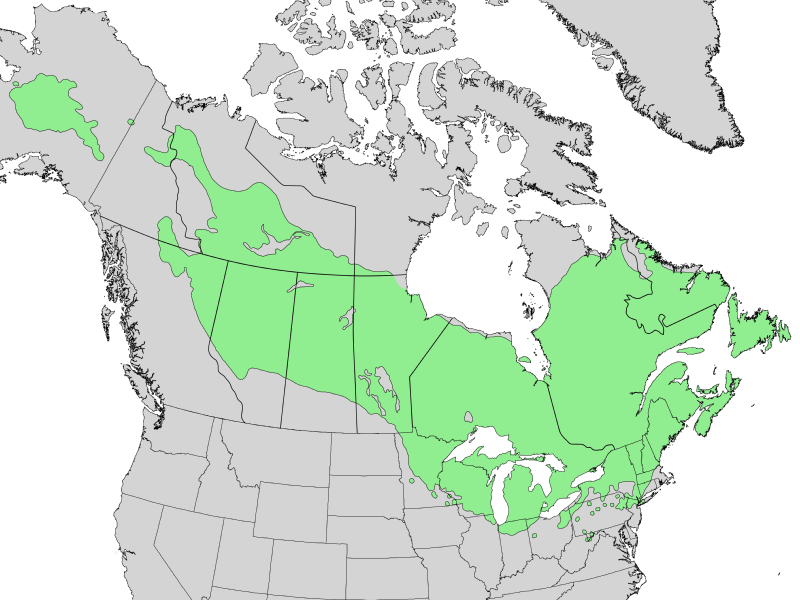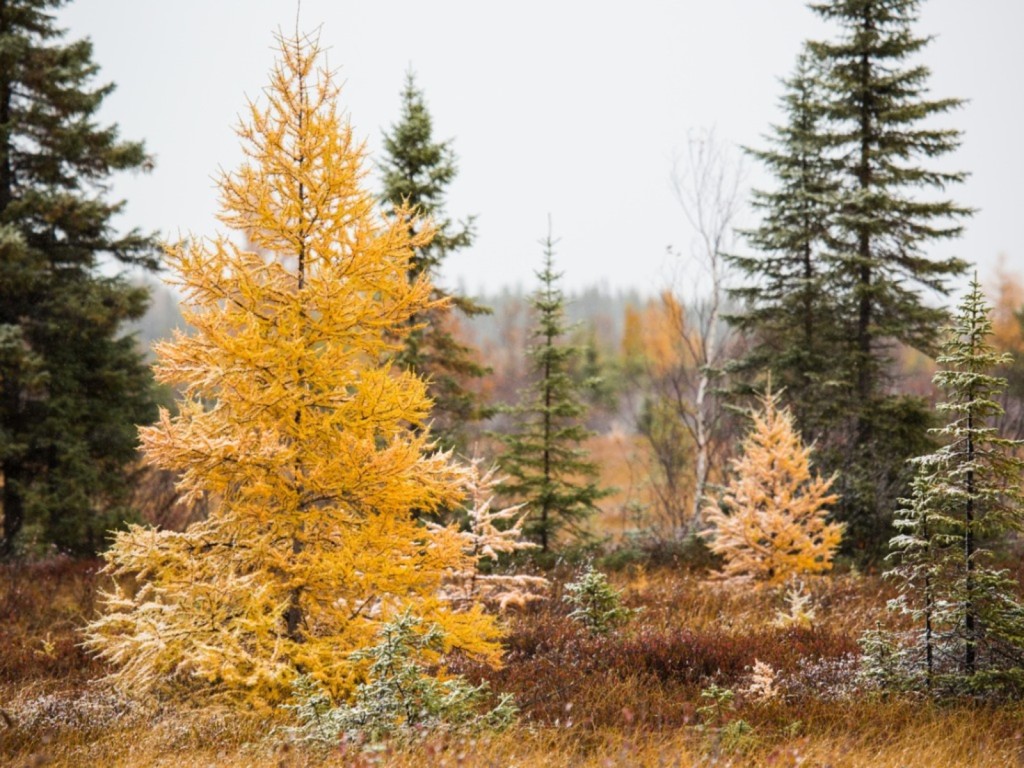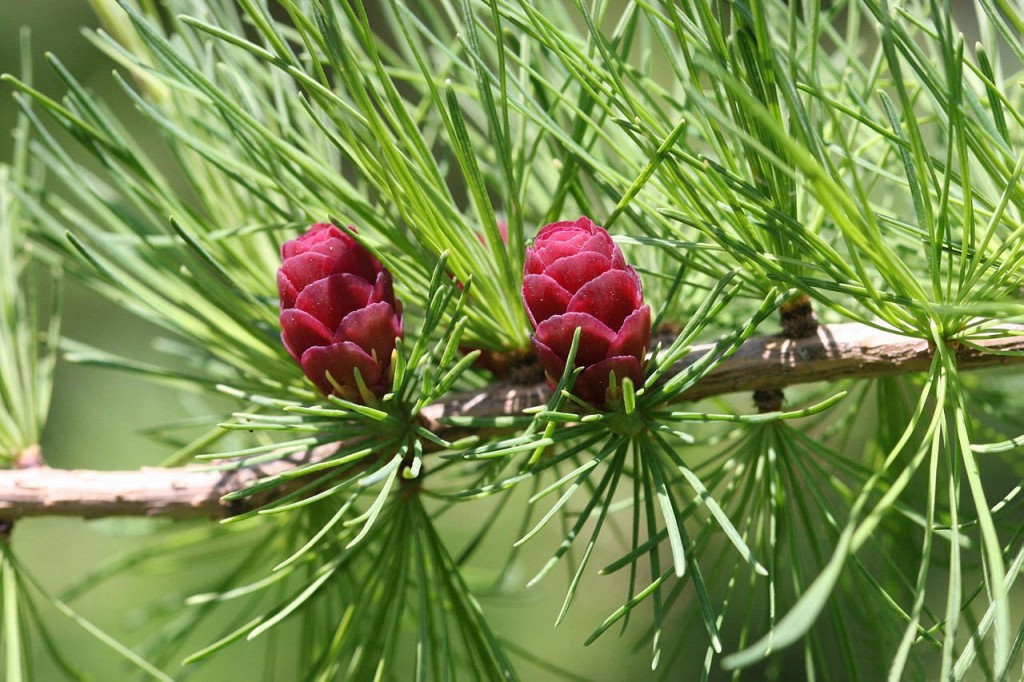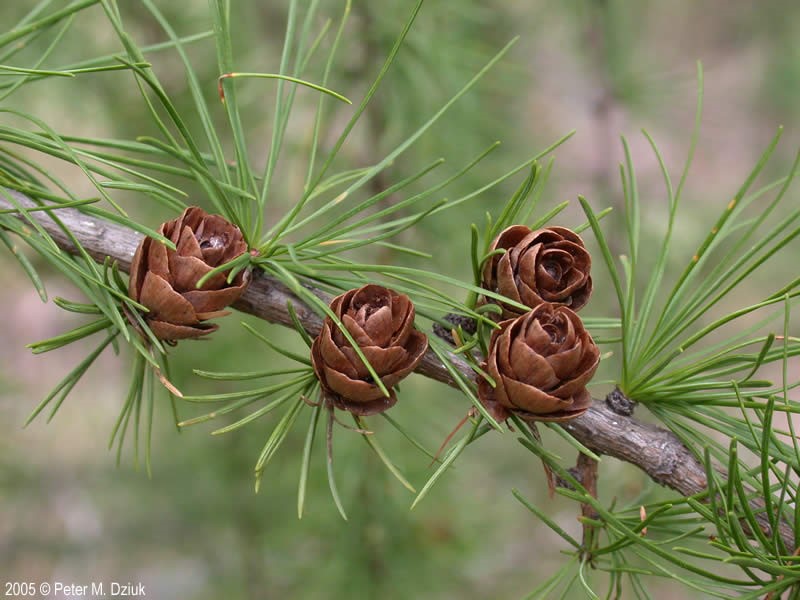Tamarak (Larix lacrina)
The Tamarak tree is native to the majority of eastern and central Canda as well as the Upper Midwest in the United States.

Distribution of Bur Oak from USGS (“Atlas of United States Trees” by Elbert L, Little Jr.)
The Tamarack is a species of larch that is a deciduous conifer. This means that is loses its leaves in the fall and that is has true cones. They can grow in swamps and bogs with watery soil or in well drained areas and tend to grow to be about 40 to 80 feet tall. Tamaracks are also very tolerant to the cold, which explains their native range that stretches into northern Canada and even Alaska. Of the boreal conifers, they are the fasted growing for the first part of their life span and they are also very long lived with life spans of 200 to 300 years. This being said, the Tamaracks like other trees have growth rates that are dependent on their environmental conditions.

https://www.gardeningknowhow.com/ornamental/trees/larch/tamarack-tree-information.htm
Tamaracks have softer needles that one can comfortably grab. They are usually 1 to 2 centimeters long and have a paler green color. They grow in clusters on shorter twigs and on their own on longer stems. In the fall, the needles will turn a vibrant yellow-orange color and fall off. When the tree is still young, it is gray and smooth, but it begins to turn a reddish brown and scaly and as it ages. The cones are small at 1 to 2 centimeters long and the seeds are very small and winged. When the cones first appear magenta at first but then turn brown as they mature.


Photo of female cone by Steven Katovich and Peter M. Dziuk
The Tamarak is known as the “mûckîgwa tîg” or the swamp tree by the Ojibwe tribe. The dried leaves were used as a fumigator for pest control. The bark was used for chronic bronchitis and inflammation of urinary tract, and hemorrhages. For artistic purposes, the roots were used as material for sewing and bag making to ensure the durability of the product. The word “Tamarack” comes from the Native American word “Hackmatack” from the Abenaki tribe that means wood for making snowshoes. The wood was also used by this tribe for dog sleds.
